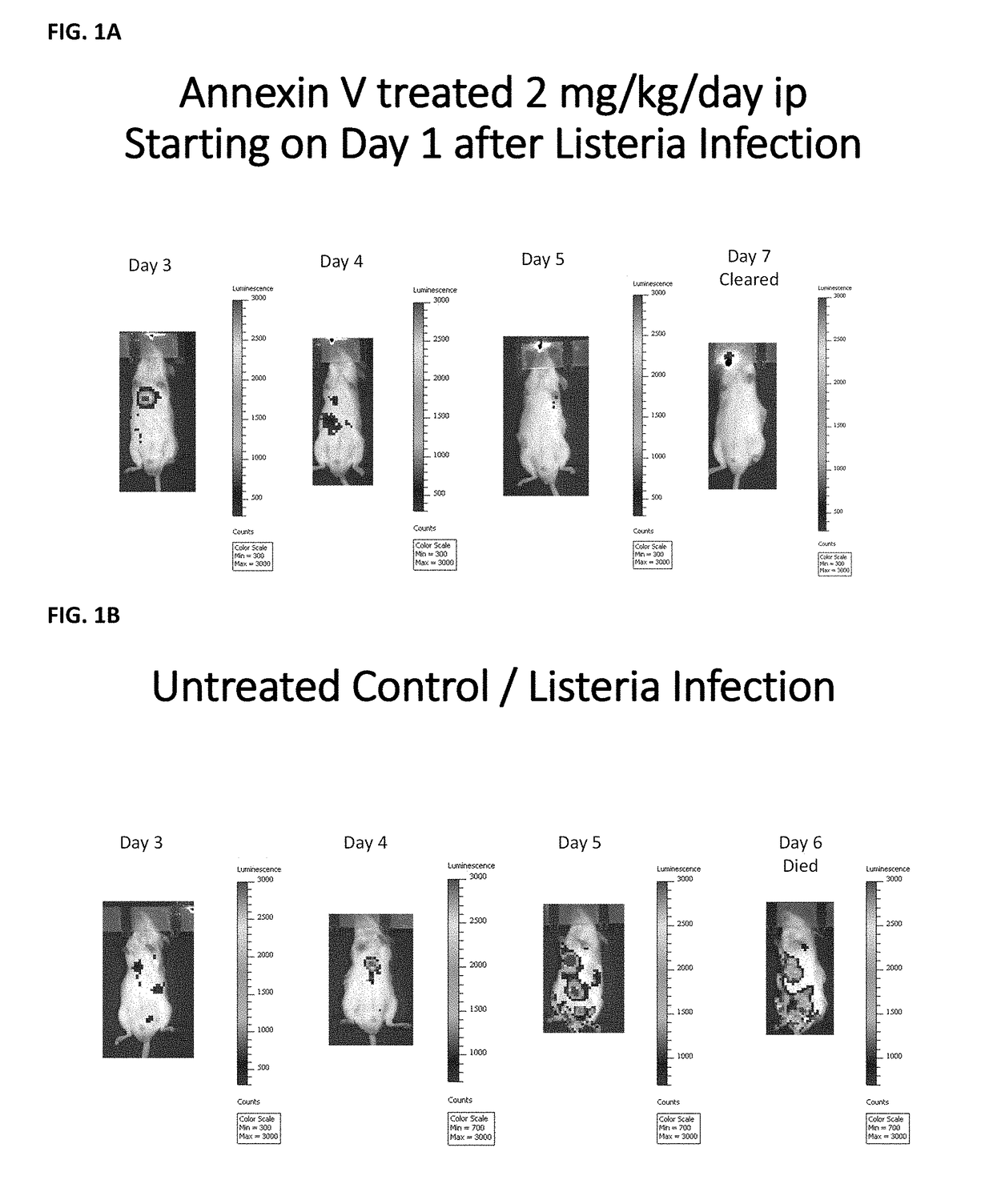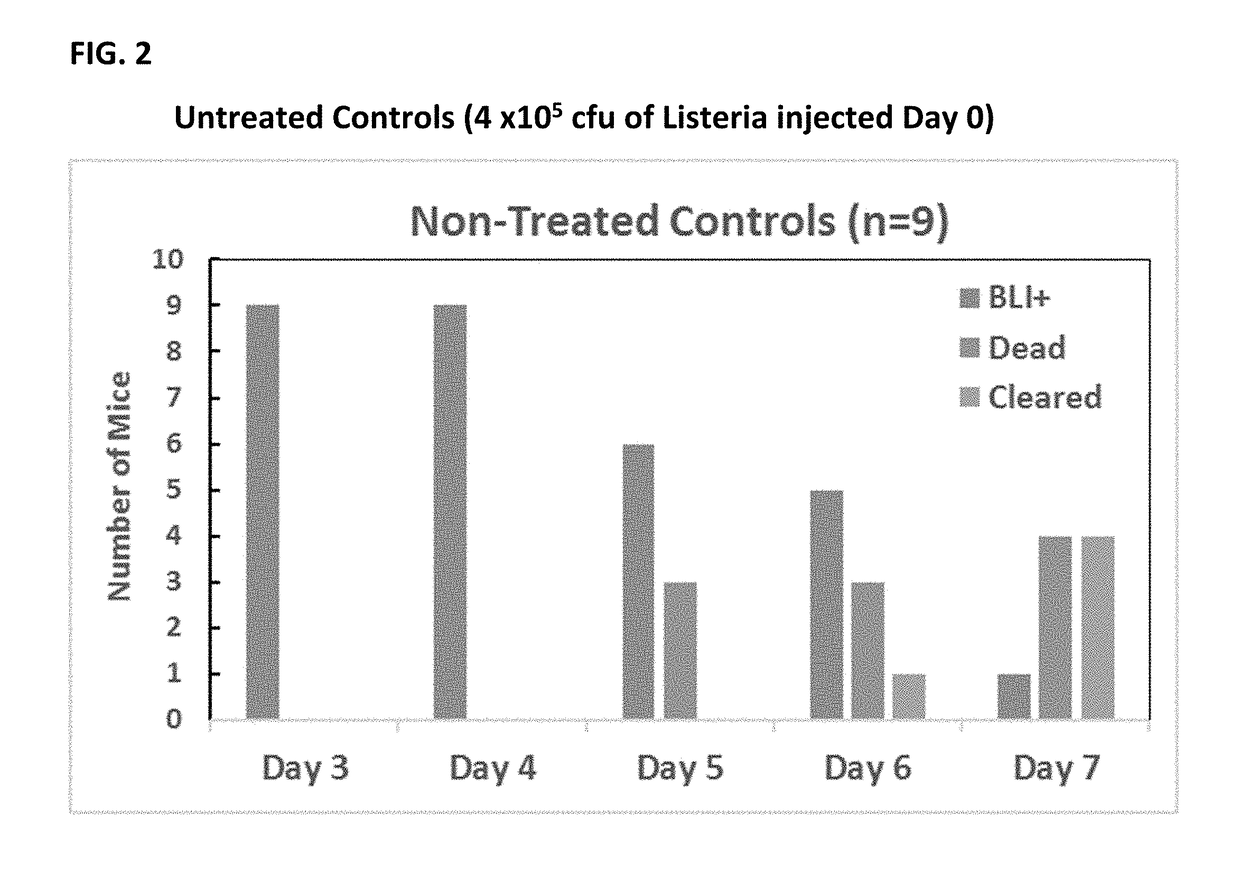Use of annexin v to reduce the spread of intracellular pathogens
a technology of intracellular pathogens and annexin v, which is applied in the direction of antibacterial agents, peptide/protein ingredients, drug compositions, etc., can solve the problems of character cell change and death, and achieve the suppression of the immune system's regulatory t cell immunosuppression, enhance the host immune response, and reduce the effect of t cell immunosuppression
- Summary
- Abstract
- Description
- Claims
- Application Information
AI Technical Summary
Benefits of technology
Problems solved by technology
Method used
Image
Examples
example 1
[0081]5×105 / mL of Listeria (-luc expressing for daily BLI imaging) bacteria growing at log phase were injected via tail vein into two groups of CD-1 female mice (n=5 each) 12 weeks in age on Day 0. On Day 1 all 10 mice were imaged. Then the five experimental group mice were injected with a single ip dose of stock annexin V at 2 mg / kg ip followed up by daily ip doses of annexin V×4 days.
[0082]It took several days for treated mice to clear Listeria (3 of 5) as confirmed by BLI. Furthermore, after two to three doses of annexin V treated mice regained a healthy appearance and demonstrated normal behavior despite a sizable bacterial load in the liver and spleen of one mouse. A single annexin V treated mouse died on Day 3 likely due to the intrinsic variability in the Listeria infection model. The 4 surviving treated mice were euthanized on Day 6, all in apparent health as observed clinically.
[0083]2 of 5 untreated infected controls died; one on Day 4 and the other Day 5. All untreated mi...
PUM
| Property | Measurement | Unit |
|---|---|---|
| time | aaaaa | aaaaa |
| dissociation constant | aaaaa | aaaaa |
| dissociation constant | aaaaa | aaaaa |
Abstract
Description
Claims
Application Information
 Login to View More
Login to View More - R&D
- Intellectual Property
- Life Sciences
- Materials
- Tech Scout
- Unparalleled Data Quality
- Higher Quality Content
- 60% Fewer Hallucinations
Browse by: Latest US Patents, China's latest patents, Technical Efficacy Thesaurus, Application Domain, Technology Topic, Popular Technical Reports.
© 2025 PatSnap. All rights reserved.Legal|Privacy policy|Modern Slavery Act Transparency Statement|Sitemap|About US| Contact US: help@patsnap.com



